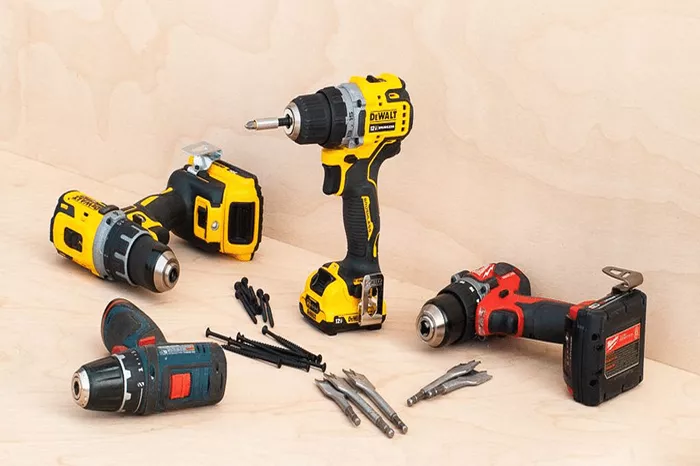What Is Power Tool Voltage
Voltage is a key factor in determining the efficiency and power of a power tool. In simple terms, voltage refers to the force that drives the current through the tool’s motor. The higher the voltage, the more power the tool can generate, making it capable of handling tougher tasks. Conversely, a lower voltage might make the tool more suitable for lighter, more precise work.
Understanding voltage ratings is critical when selecting the right power tool for your specific needs. Whether you’re a DIY enthusiast or a professional tradesperson, knowing how voltage affects the performance of power tools can help you make an informed decision, ensuring optimal results for your projects.
Importance of Voltage in Power Tools
Voltage plays a crucial role in determining the tool’s power output and overall performance. It directly impacts the motor speed, torque, and the types of tasks the tool can handle. A power tool’s voltage rating often correlates with its battery capacity, with higher-voltage tools requiring larger, heavier batteries but offering more robust performance.
Common Voltage Ratings and Their Applications
There are several voltage ratings commonly found in power tools, with the most popular being 12V, 18V-20V, and 36V and above. Each of these voltage levels has specific applications that suit different types of work. Below, we’ll explore each of these ratings and discuss the tasks they are best suited for.
12V Power Tools: Ideal for Light Tasks
Power tools with a 12V rating are typically the most lightweight and compact options. These tools are ideal for light tasks such as drilling small holes, driving screws, and other simple DIY projects.
Recommended Uses
Light drilling: Perfect for making small holes in wood, plastic, and soft metals.
Screwdriving: Ideal for assembling furniture or other lightweight construction projects.
Home repairs: Suitable for simple tasks around the house, like hanging pictures or assembling cabinets.
Advantages
Compact size: Easy to handle and maneuver in tight spaces.
Lightweight: Minimizes user fatigue during extended use.
Cost-effective: More affordable compared to higher-voltage tools.
Disadvantages
Limited power: Not suitable for heavy-duty tasks.
Shorter runtime: Batteries may not last as long under heavy use.
18V-20V Power Tools: Versatile and Balanced
Power tools rated at 18V-20V are the most popular voltage range for both DIYers and professionals. They offer a great balance of power, portability, and battery life, making them suitable for a wide range of applications.
Recommended Uses
General home improvement: Drilling, driving, and cutting tasks in most materials.
Professional use: Ideal for light to medium construction tasks.
DIY projects: Can handle a variety of projects, from building furniture to small renovations.
Advantages
Versatility: Works well for a variety of tasks.
Good battery life: Provides longer runtime compared to 12V tools.
Moderate weight: Offers a good balance between portability and power.
Disadvantages
Slightly heavier: More weight compared to 12V tools, which may lead to user fatigue during prolonged use.
Not ideal for heavy-duty tasks: Although versatile, it may not have the power for large-scale construction or industrial work.
36V and Above: Heavy-Duty Performance
36V and higher-voltage tools are best suited for heavy-duty tasks. These tools are typically used in industrial settings, construction sites, or for large-scale projects where high power is essential.
Recommended Uses
Cutting thick materials: Ideal for making precise cuts in thick wood, metal, or concrete.
Drilling large holes: Capable of drilling larger and deeper holes in tougher materials.
Heavy construction tasks: Suitable for tasks that require sustained high power, such as demolishing materials or driving large fasteners.
Advantages
High power: Handles tough jobs with ease.
Longer battery life: Can run longer due to its higher capacity.
Efficient for industrial work: Perfect for professional tradespeople.
Disadvantages
Heavier: Can cause user fatigue, especially during extended use.
Higher cost: More expensive than lower-voltage tools.
Bulkier: Can be difficult to maneuver in tight spaces.
Choosing the Right Voltage for Your Needs
When selecting the right voltage for your power tools, several factors need to be considered:
Project requirements
Consider the tasks you’ll be performing. For simple DIY projects, 12V tools may suffice. For more complex projects, 18V-20V or 36V tools are better suited.
Budget
Higher voltage tools typically come at a higher price. Ensure that the tool you choose fits within your budget while still meeting your needs.
Tool type
Certain tools, like drills and saws, may benefit more from higher voltages, whereas screwdrivers may only require lower voltages.
Tips for Comparing Voltages Across Different Brands
Pay attention to the battery capacity (measured in Ah) in addition to the voltage.
Check the tool weight to determine if it’s comfortable to use for extended periods.
Consider brand reputation and warranty options for peace of mind.
Safety Considerations
Using power tools of any voltage level requires attention to safety:
Always follow the manufacturer’s safety guidelines and wear appropriate safety gear.
Ensure the battery is fully charged before use, especially for high-voltage tools that might drain faster under heavy use.
Regularly inspect tools for wear and tear to avoid malfunction.
Proper handling and maintenance are essential for safe operation, regardless of the tool’s voltage. Regularly clean and inspect your tools, and store them in a safe, dry place to avoid damage.
Conclusion
For more expert advice on choosing the right power tool voltage, consider visiting online resources or consulting with professionals at local hardware stores. You can also check out detailed product reviews and comparison guides to help you make the best decision for your needs.
Related topics:
- Where Should Power Tools Be Stored?
- How Should Power Tools Be Carried?
- How to Clean Milwaukee Power Tools: A Comprehensive Guide

